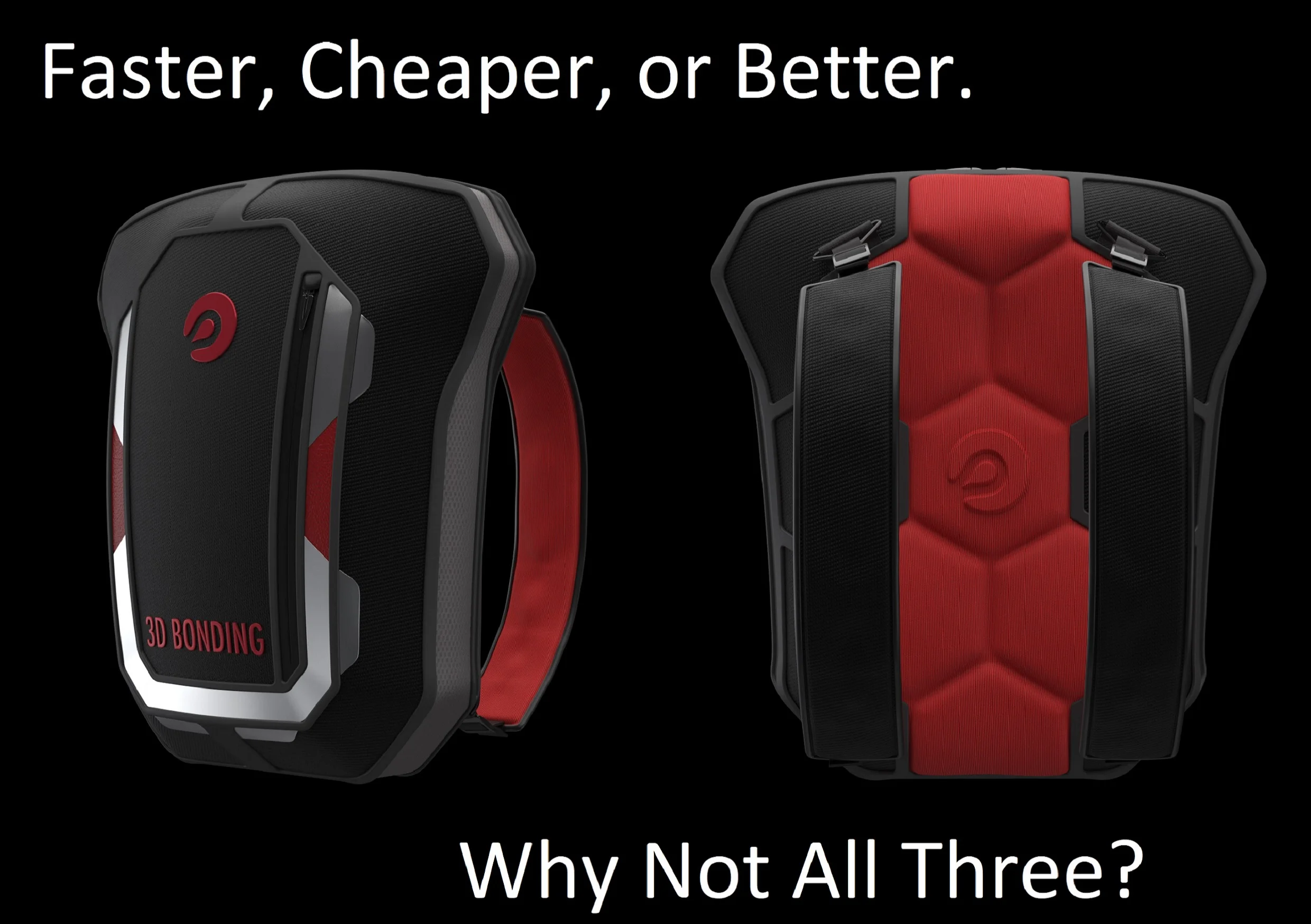How 3D is helping designers experiment, innovate and deliver better products
David Cohen, an Industrial Design student and entrepreneur is working to address safety and performance issues in the cycling bag industry. As more and more people turn to cycling as their primary means of transportation the number of related injuries and/or property damage has steadily increased. The current problem with cycling bags is that most offerings are not:
- Big enough to be truly useful
- Comfortable enough to use all the time
- Sturdy enough to ensure the safety of the contents when (not if) the rider falls.
Unfortunately, since most people try to protect their "gear" when they fall, they end up injuring themselves in the process.
David was interested in finding a way to quickly explore a wide variety of design and production concept for a new type of cycling bag. He knew he needed to find a fast and reliable solution to review and test designs and to deliver a quality product. And he didn’t have the kind of money needed to redo prototypes over and over again. He needed to get it right on the first try.
Using 3D digital design and patterning to get it right
David relied on 3D CAD and ExactFlat pattern flattening software to get his job done. With 3D CAD he was able to develop a concept, visualize the final product, and examine more than a dozen concept in just a few days. This was roughly the same amount of time it used to take to create a single paper model of a bag for evaluation.
He was then able to take the 3D CAD model directly into ExactFlat to generate patterns. The Stain and Sag analysis features had the most impact on his process.
"I knew I could get a pattern quickly but I hadn’t considered the saving in validation until I saw the stain/sag map for the pattern. That’s what kills you in the fit stage. Once I saw that I could optimize the pattern I decided to try and cut the pieces and everything fit." David Cohen.
David also found that the prototyping process was streamlined and the cost for test materials was reduced when he went to 3D. Since he only made a single prototype he was able to select a slightly more expensive and durable fabric. That helped validate not just the design but the actual look and feel of the planned final product.
For the next step David is working with contract cut and sew partners and planning to set up an eCommerce site to offer on-demand sales and delivery of the bags. He sees the use of 3D design and patterning tools as the best approach to turn his passion into a business.
Are you looking for new ways to address key industry issues and to develop and deliver exciting new products? Click on the links below to schedule a time to speak with one of our experts.









